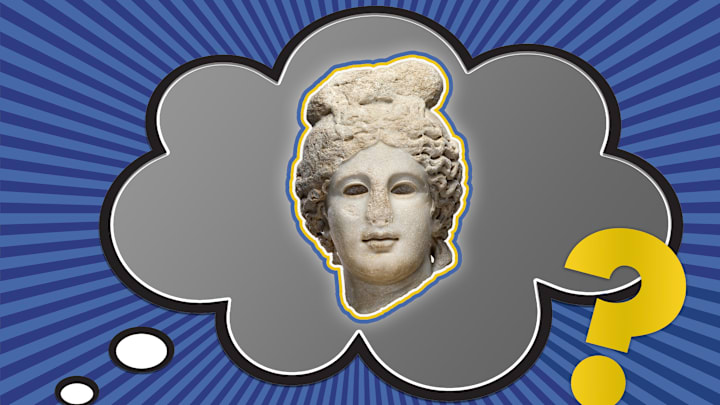Many statues that have survived for thousands of years—including Greek, Egyptian, and Roman works—have not always made it to the modern era completely intact: A fair number are actually missing their noses. (Various museums and cultural institutions have such specimens in their collections, including a statue in the possession of the Acropolis Museum in Athens.)
But where have all these old statues’ noses gone? There are several reasons that could explain the disfigurement.
Bad Reputation
One of the reasons stems from a common belief in antiquity that to damage the image of a person was also to damage that person themselves. This became a practice in Ancient Rome, where the defilement and destruction of statues was connected to the reputations of the people embodied in those artifacts. The removal of noses has also been linked with the real-life penalty of facial mutilation that also existed during these ages and continued through the time of the Byzantine Empire.
You May Also Like ...
- There’s the Rub: How One Murder Victim’s Risqué Grave Became a French Fertility Icon
- What Happened to the Venus De Milo's Arms?
- Why Aren’t Classical Statues Very Well-Endowed?
Add Mental Floss as a preferred news source!
Stopping the Supernatural
There is another reason for the iconoclasm of noses that goes beyond attitudes toward people in the physical world: The belief in the connection between the physical form of a statue and who it represented extended past human beings and into the realm of statues of the gods. Some past civilizations, including Ancient Egypt, believed souls could inhabit statues and that it was therefore possible to communicate with the gods via effigies of their forms.

The disfigurement of a statue could thus sometimes be a superstitious act, one designed to halt or thwart the presence of a deity or a supernatural being. People specifically targeted the nose because of how crucial the appendage was to the process of living; noses do, after all, play a significant part in how people breathe. To remove the nose was therefore seen as a way to kill the spirit the statue was believed to represent.
Got Your (Plaster) Nose
There was a period during the 19th century when some museums attempted to repair the missing noses by adding replacements to these statues—the Glyptotek in Copenhagen contains a cabinet of more than 100 of such plaster appendages that were once used to perform these artistic nose jobs.

The cosmetic repairs were partly done because the financial value of a statue during this period increased the more complete it was. As such, people had some additional motivation to add fake noses to any less-than-whole faces.
By the 20th century, however, cultural preference had shifted back to displaying these sculptures in the condition in which they were left in antiquity. Today, it’s more likely you’ll see a statue missing its nose than one sporting a fake schnoz.
